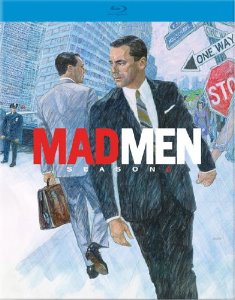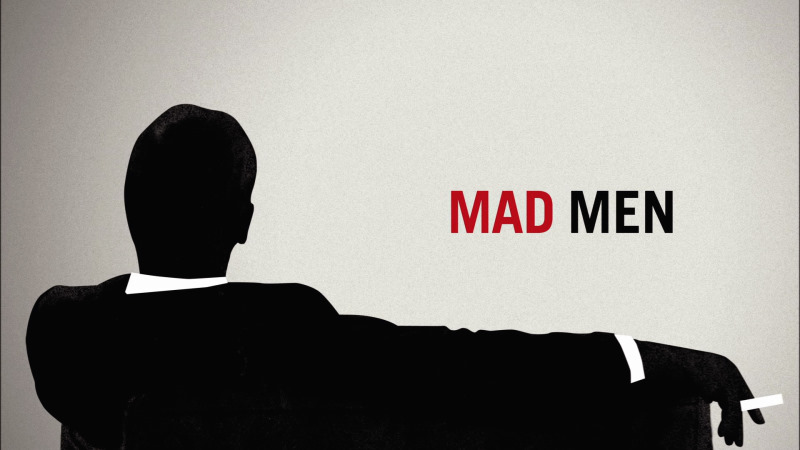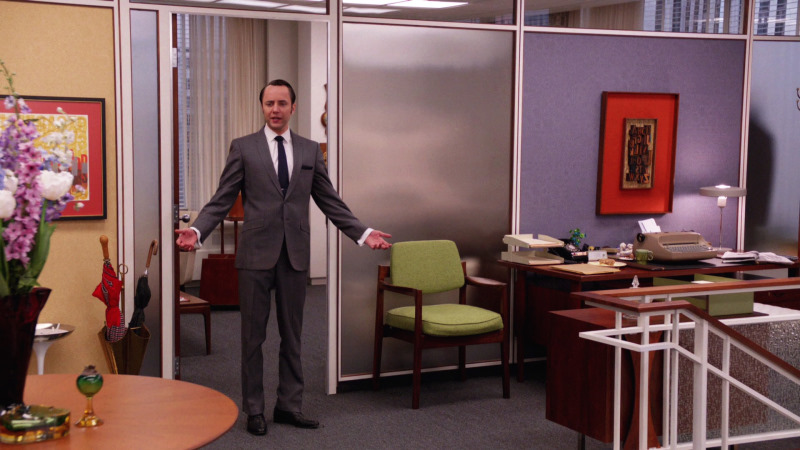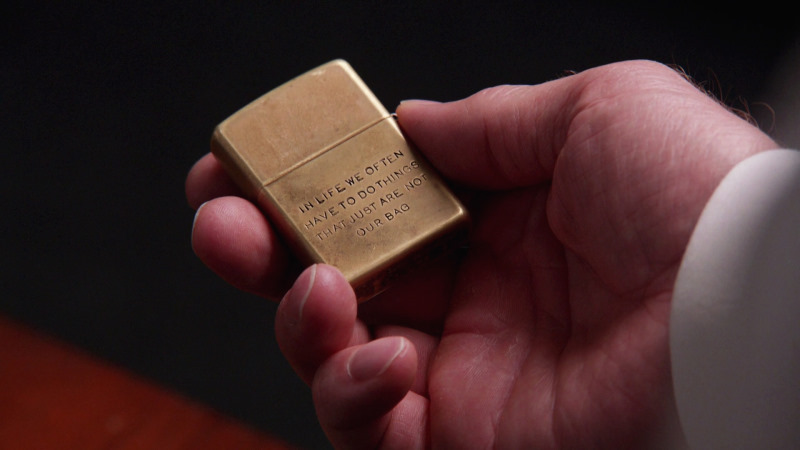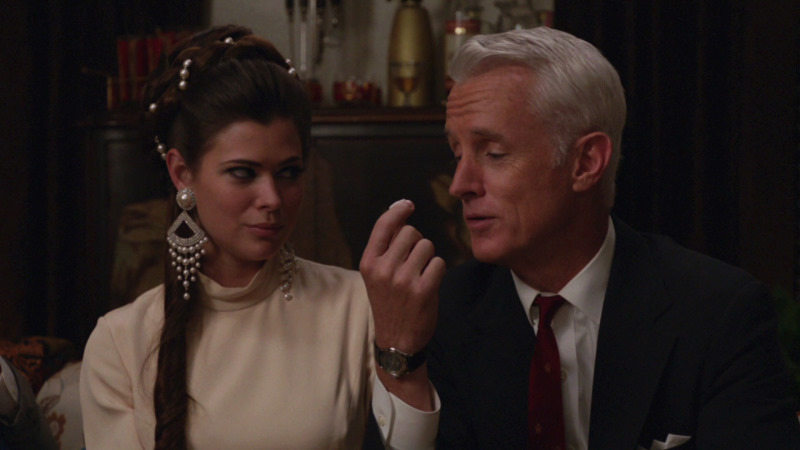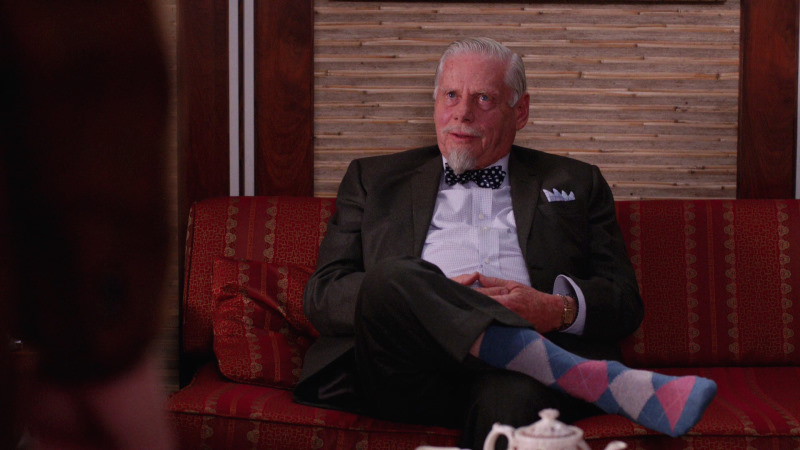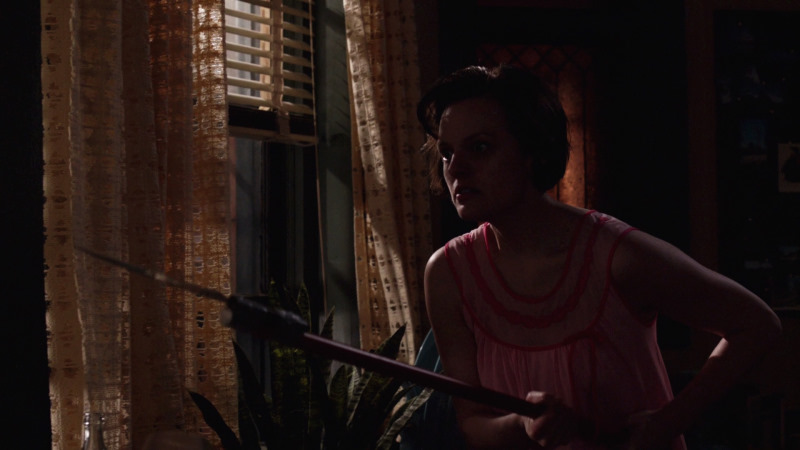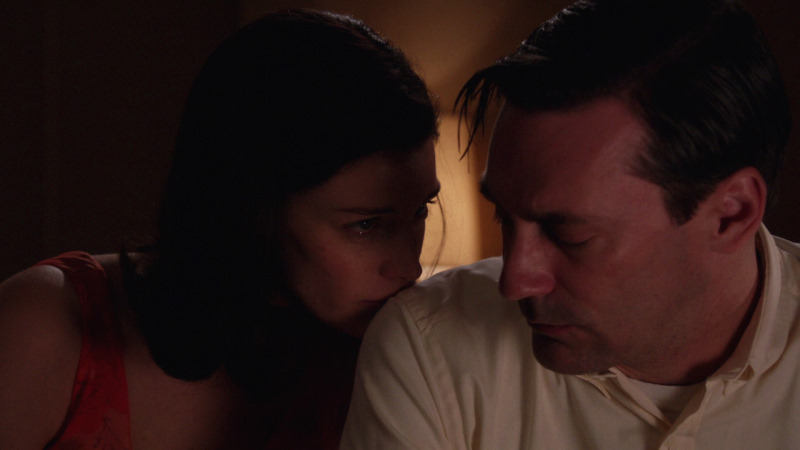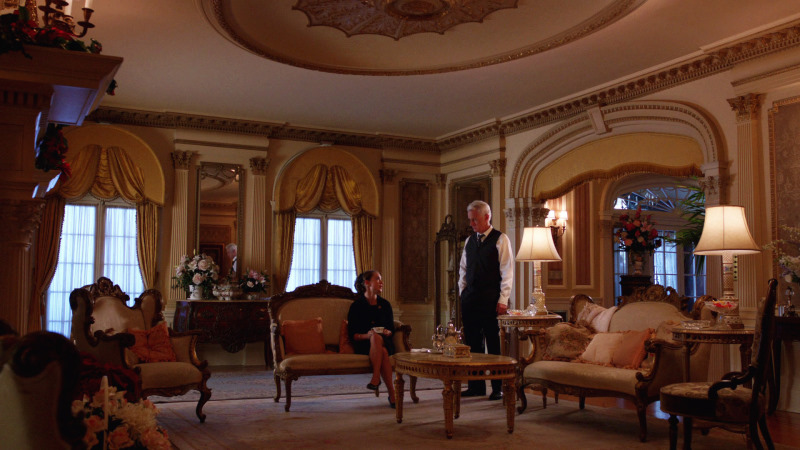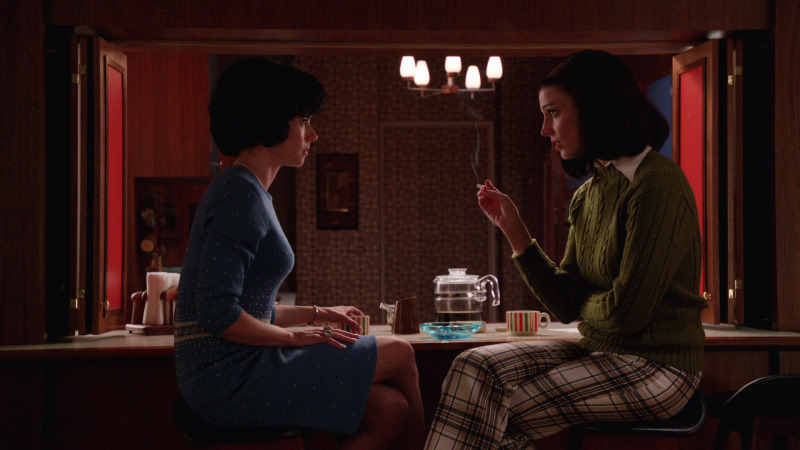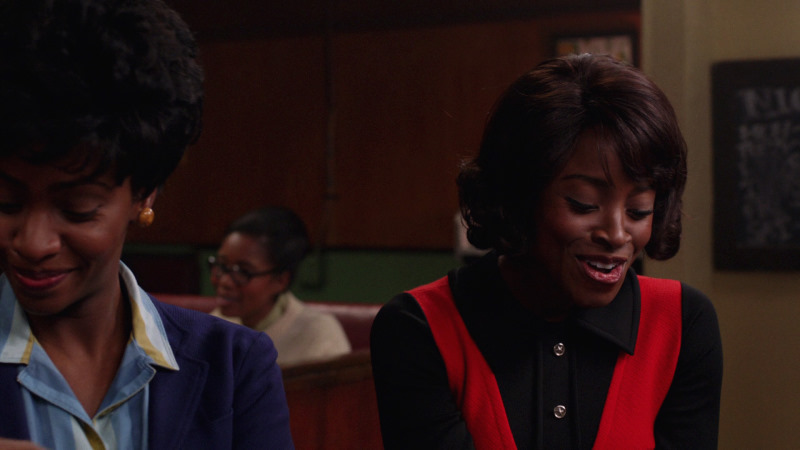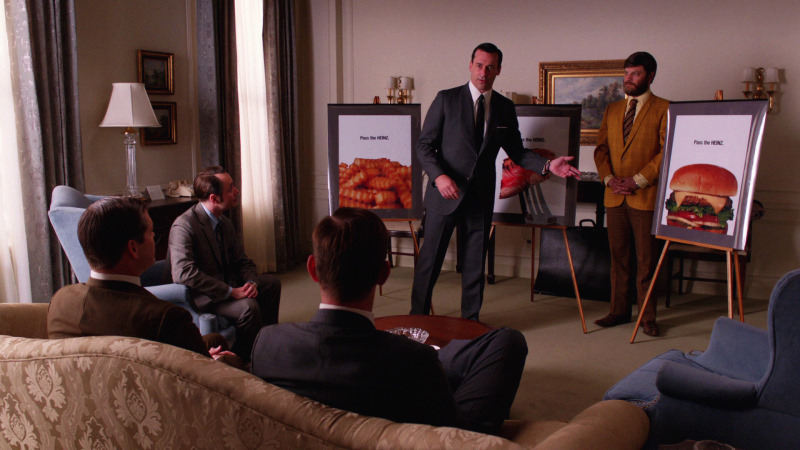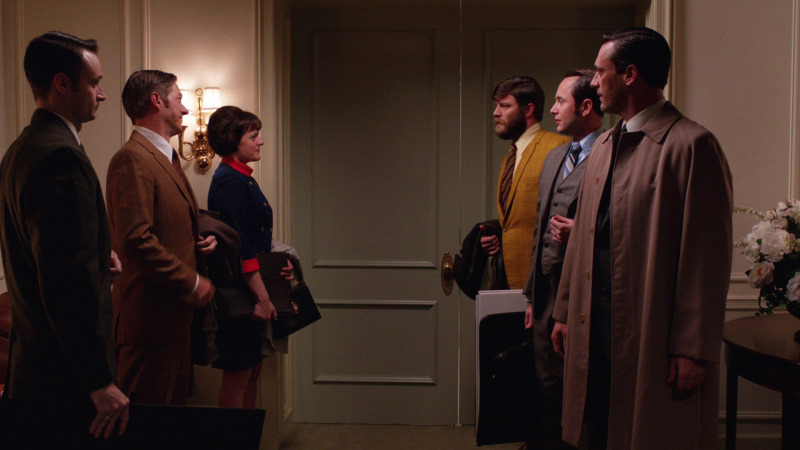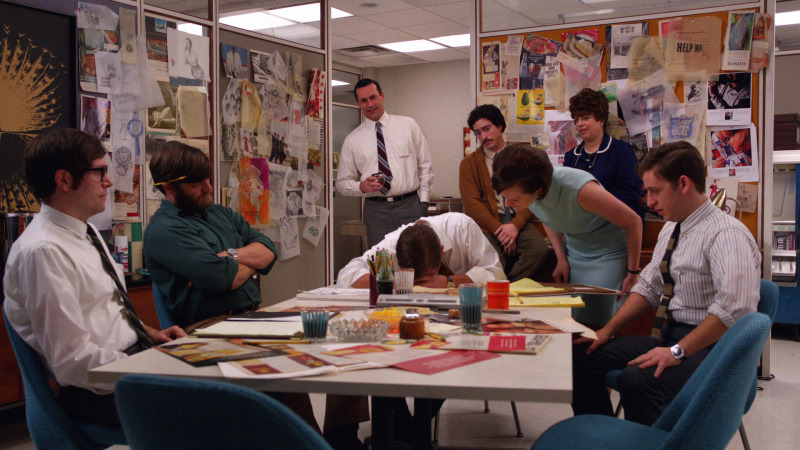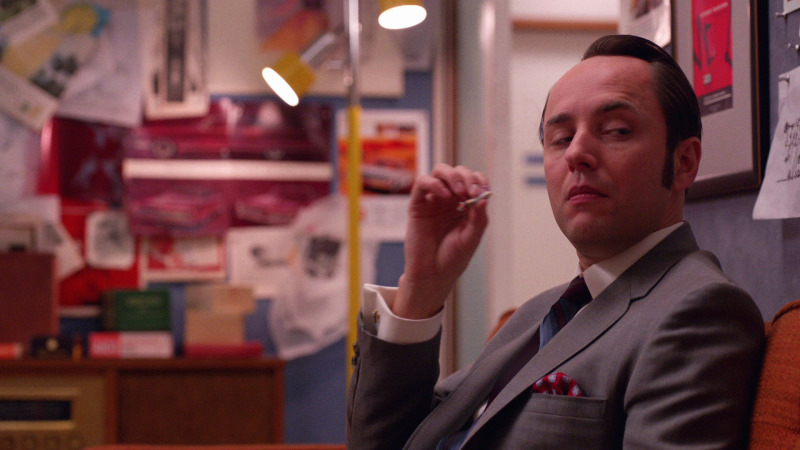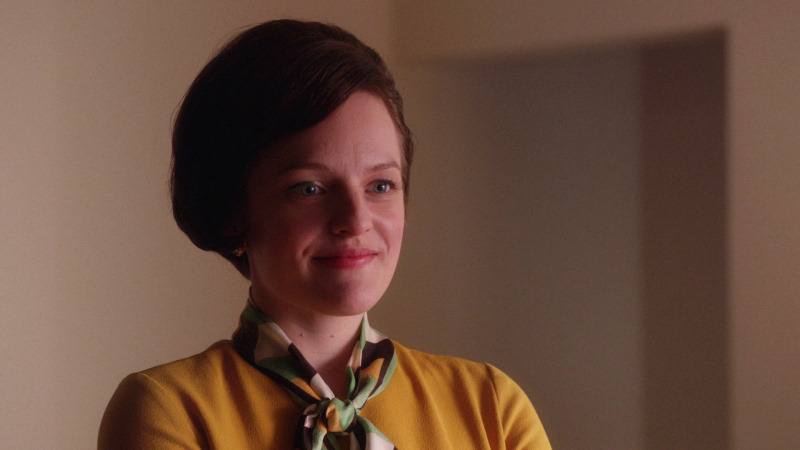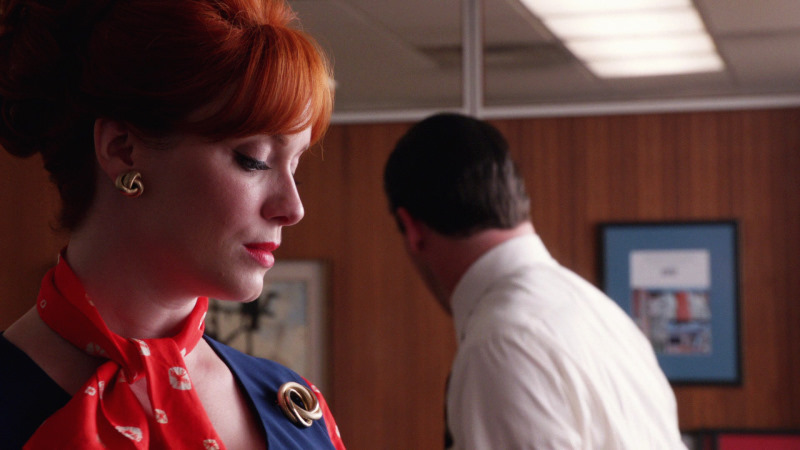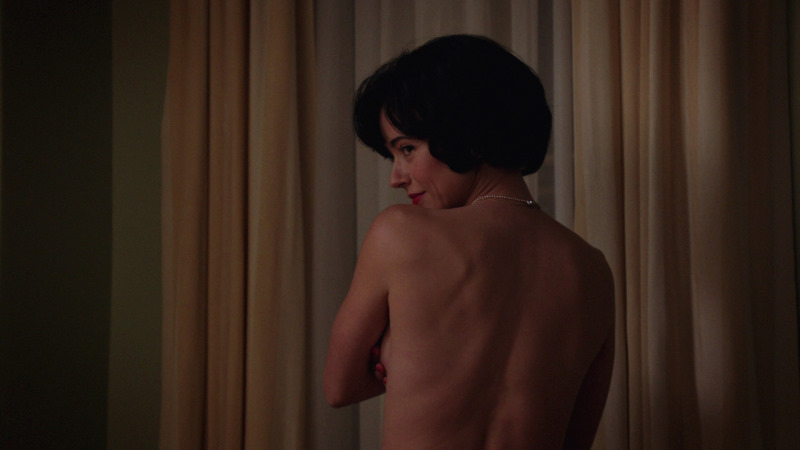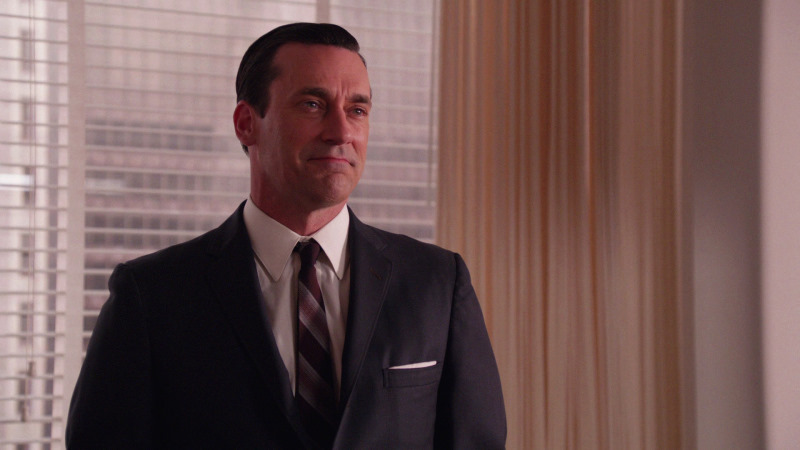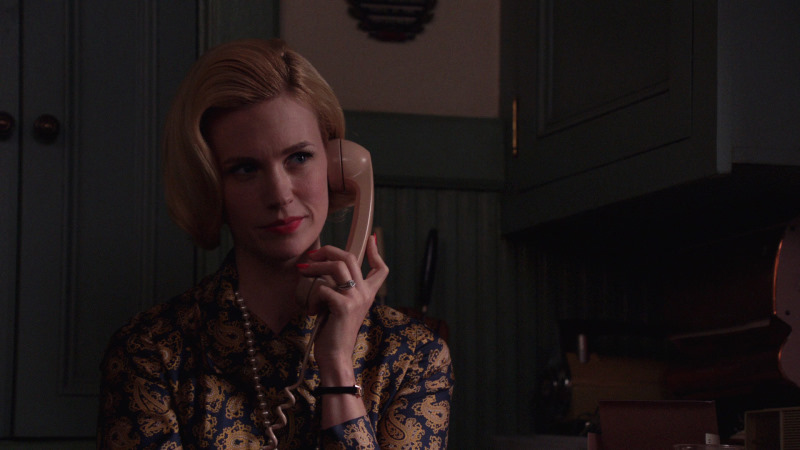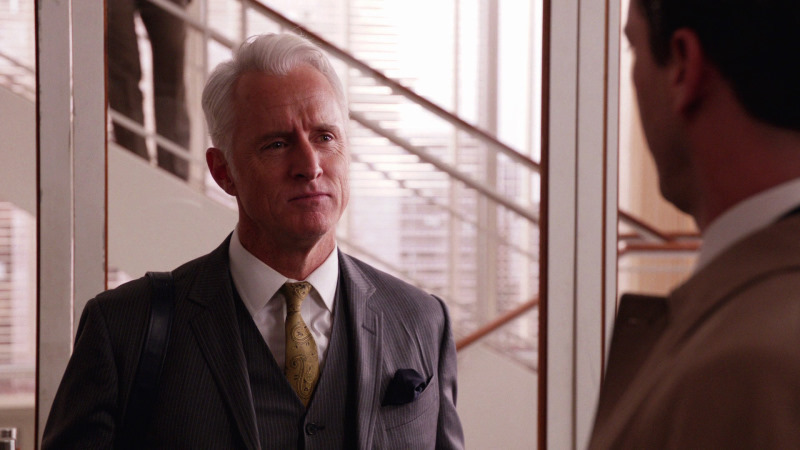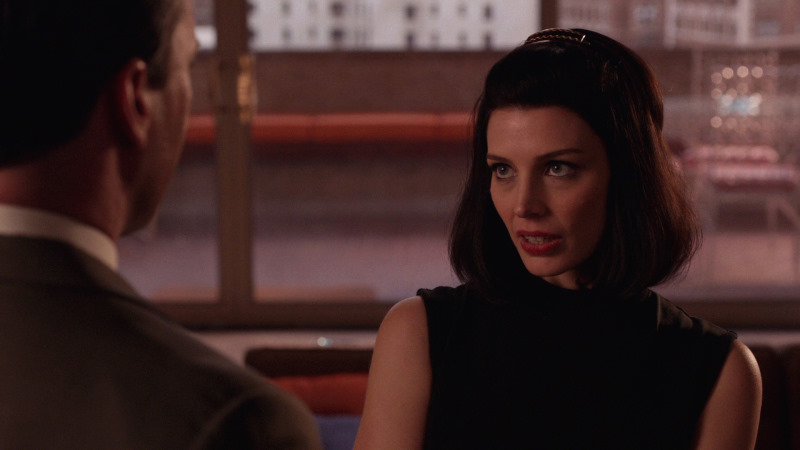![]()
![]()

![]()
![]()
|
Search DVDBeaver |
S E A R C H D V D B e a v e r |
L e n s V i e w sA view from the Blu (-ray) on DVDBeaver by Leonard Norwitz |
|
Mad Men - Season 6 [Blu-ray]
(Creator: Matthew Weiner, 2013)
Review by Leonard Norwitz
Mad Men ~ Season 6 Created for television by Matthew Weiner Written by Matthew Weiner, Erin Levy, et al Cinematography: Chris Manley Production Design: Dan Bishop Art Direction: Christopher Brown & Shanna Starzyk Music: David Carbonara Produced by Erin Levy, Jon Hamm Directed by Phil Uppendahl, Phil Abraham, et al U.S. Air Dates: April 7 - June 23, 2013
Production: Television: AMC Video: LionsGate
Video: Aspect ratio: 1.78:1 Resolution: 1080p Codec: AVC Disc Size: Dual-layer 50 GB x 3 Episode Size: avg. 9.6 GB Total Avg Bit Rate: Moderate (ca. 23 Mbps) Runtime: avg 47:30/episode; 614 min. total Episodes: 13 Chapters: 7 per episode
Audio: English DTS-HD MA 5.1
Subtitles: English SDH & Spanish
Extras: • Recreating An Era - HD (26:10) • Turn On, Tune In, Drop Out – in HD (29.35) • Summer of Love (Interactive Gallery)
Presentation: Amaray Blu-ray case: BRD x 3 Street Date: November 5th, 2013
Description: Returning for its sixth season, MAD MEN, four-time Primetime Emmy winner for Outstanding Drama Series and winner of three consecutive Golden Globes, explores the glamorous and ego-driven "Golden Age" of advertising in the late 1960's New York City. Don Draper (Golden Glober - winner Jon Hamm) and the rest of the award-winning cast continue to captivate as they deal with the aftereffects of adultery, divorce, a merger, and an ever changing social climate.
The Season: 9 The year is 1968. World events spill over into the fabric of mad men and, in their way, mad women more than previous seasons just as they did in our lives at the time. Few were unaffected by American escalation of its military involvement in Southeast Asia, the assassinations of Martin Luther King and Robert Kennedy, and the proliferation of mind-altering drugs among the middle class. Characters turn on (or won’t), engage in extra-marital sex more than usual, at times with the participation of their spouses, Don’s advertising firm tries to alter Dow Chemical’s image as a killer of women and children (We remember those photos of the effects of napalm but the show smartly only refers to what everyone already knows.) The aftermath of the killing of Dr. King exploded the civil rights movement, putting race relations in its most glaring light since the Civil War.
The season opens with an episode that was originally aired on separate nights, here seamlessly joined so that before you know it, you’re well into the second half. The episode is titled “The Doorway” (not that we know this without looking it up on the disc’s extra features or elsewhere) – a portentous title that sets the stage for the season. On their return from a company-sponsored holiday at the Royal Hawaiian, Don and Megan are about to enter the elevator to go up to their 18th floor apartment when the doorman suddenly collapses. Their neighbor and his wife from the floor below come along just that moment. He turns out to be a cardiac surgeon and offers life-saving first aid.
The couples become friends and Don and the doctor’s wife, Sylvia, start an affair that offers continued insight into Don’s state of mind. In a later episode, Don, who has taken offense about his wife’s having to do “love scenes” for her daytime soap, challenges Sylvia about guilt, asking her if her religion offers her an out for her having this affair. Don has no such recourse and instead keeps himself emotionally detached as his major safeguard. Sylvia admits that she does pray. “For what, absolution?” “No, for you. . . to have peace.” It’s one of the most touching and disturbing scenes in the entire series.
Lately, I’ve been catching up on Breaking Bad, a series that bears interesting contrasting comparison to Mad Men. I gave up on Breaking Bad a couple years back because I couldn’t get past Walter’s having committed murder at the end of the second season, motivated not by passion or self-defense, but by greed and an unwillingness to negotiate with an actual human being, something he was never comfortable with. It seemed to me at the time: petty and unconvincing, something done only to take the series where its producers wanted to go, not because this character, as described by this time in the show, would actually do.
I continued to see Walt as a blowhard and a coward, as evidenced by how he would persuade (read: bully) Jesse, who addresses his former high school chemistry teacher as “Mr. White,” to do his dirty work for him. It never occurs to Jesse that his girlfriend’s death was anything but accidental, which doesn’t bother Walt as much as we imagine it would bother us. And there’s the rub! Like Raskolnikov, once he commits the ultimate deed, once he breaks bad, Walter White begins to see demons everywhere. But unlike Raskolnikov, who is tormented by conscience, Walt’s demons are all externalized. He becomes paranoid but also remorseless - in a kind of a psychopathic personality, if you will.
Walt avoids getting his hands dirty from then on – though he enjoys threatening the act partly so that he can feel he has power and also so that he doesn’t have to face what he himself has already done. He prefers to arrange it so that someone else pays for his crime (lookno further than Hector Salamanca and Gustavo Fring at the end of Season 4.) Walter, the man, becomes increasingly constricted as his paranoia and narcissism becomes increasingly expansive. In its way, it’s an interesting bit of character devolution. But Walter isn’t really all that interesting as a person - I mean, how much time do you think you could tolerate in his presence? - and we wouldn’t care a fig for what happens to him, the cancer notwithstanding, if it weren’t for the catastrophes he brings on everyone around him – all the while blaming others for every lurking danger, every smoking gun . . . despite that his wife does everything in her power to point out how her husband creates the very danger he says is out there.
Don Draper, on the other hand, begins life on the series with another man’s identity, an identity he has stolen – in a kind of post-mortem murder, as it were. Don is a man incapable of intimacy when we first meet him. He trades on his charisma, which is legendary, and his devastating (there’s a word!) good looks. He gets the beautiful model wife, the lovely house in the country, and a couple of kids for good measure. His psychological voyage throughout the series is the opposite of Walt’s: starting with the unexpected death of his brother, we see Don gradually succumb to feeling, eventually experimenting with revealing himself and even caring for others instead of merely using them to get from point A to point B. Don has had decades of experience hiding, so his journey from here out is far from linear.
While Don’s story is central to the series, most every other character, male and female, seems to be reflections of his story: Most important is Peggy Olson, the young woman who starts off as a secretary but gradually ekes out a place for herself as a creative copywriter in a context entirely dominated by good old boys. Naturally, she has her work cut out for her, but Matt Weiner, the show’s creator, doesn’t stop there: he fleshes out a character with identity issues of her own. And who is it that saw in Peggy a talent to exploit?: Don, not that he can permit himself, for both personal and professional reasons, to be direct in his respect. Quite the contrary. So when Peggy decides to move on to a higher position with a competitor at the end of the previous season, Don, in this season, muses that he always expected a person would move on after being trained and getting as far as they could in his company, but the idea that this could happen with his own protégé never occurred to him. It’s an amusing statement when it comes, but, as is usually the case in Mad Men, it attends a bitterness that results from an unwillingness to look at oneself critically.
My criticism of Mad Men since the previous season is that it isn’t big enough to give ample breath to its inhabitants. The show needs a full hour; forty-seven minutes just doesn’t cut it. Once Betty and Don divorced, Betty was sidelined rather than ignored altogether. Weiner would give us little bits of her new life but not enough to make them compelling, let alone interesting. As if to make up for her absence, Betty is resuscitated now and then in this season, but her journey seems detached (which it is, literally.) She is still finding her way as a mother and a wife, but hasn’t latched on to anything substantive beyond these. Not that this is essential for every woman, but she does feel lost and isn’t clear why.
The tightly wrapped Joan Holloway is another person who seems threatened with exile, yet she always retrieves herself somehow. She’s usually every bit as self-observing as Roger Sterling, the cast’s resident cynic (and my favorite character), in contrast to Pete Campbell, who keeps his basic unhappiness/meanness at arm’s length from his consciousness. It’s been five seasons and 70-odd episodes and I can’t say that I truly know these people, yet I suspect we know them better than anyone else in their lives. What more can we ask if we expect a show to be honest rather than two-dimensional about its characters!
All the same, I found the scenes with Don’s black secretary, Dawn, and her friend at the bar to be more well-intended than intimately revealing, the writing more focus-grouped instead of flowing naturally. The awkwardness of race relations were sometimes better described by action instead of words. Witness Joan’s completely misjudged attempt to comfort Dawn after Dr. King’s death, and compare that with Peggy’s in a similar context just a little earlier. Comedy in Mad Men, it should be noted, is generally blended with pain, and the scene with Joan and Dawn is just as funny as it is painful to watch.
On the other hand, even more brilliantly (intentionally? unconsciously?) than in previous seasons, the writers make clear how the ads that these talented, yet still very real people - contrast any of them with those on Aaron Sorkin’s Newsroom - how they come up with are reflections of the personalities of their creators. Don’s ad for Ketchup, for example, insists on having no bottle in the ad because Ketchup is understood to be the only Ketchup (in contrast to their competitor, Catsup), whereas Peggy’s idea is that the ad shows the bottle with text that says: “Heinz. The Only Ketchup.” Brilliant!
And this is the difference between the two shows: Breaking Bad’s characters express everything they feel in the largest operatic terms possible. (That is not a criticism, but this is:) Despite that there are moments of intense feeling audiences can “identify” with, the characters themselves remain tools for the writers to pull this way and that for the sake of storyline or effect, thrilling though those effects might be. In contrast, Mad Men’s characters express their inner state only indirectly, by virtue of layers of situation, verbal interplay and history. While Joan, Roger and Megan are clearer about who they are, and can, on occasion, behave accordingly, they, like us, resent life’s little betrayals and can be just as elusive as they next fellow. Mad Men is nothing if not dense.
Breaking Bad is a series whose only challenge (not a small one, I grant you) is to come up with ever-entertaining ways to twist darkness into what is essentially a comedy and to decide how to dispatch their characters for a suitable and cathartic ending. Mad Men is about people steadfast in their commitment to how they see themselves, even if how they see themselves is as in a broken mirror. They test the water here or there, or life presents challenges to their reflection. They either go deeper or they don’t as they will, not as some overreaching plot purposes them. It’s a show difficult to bring to a conclusion.
The Series: 10 The time: The 1960s. The Place: Madison Ave. The Theme: Identity.
NOTE: The below Blu-ray captures were taken directly from the Blu-ray disc. Image: 8/9 The look of Mad Men has always been a bit vivid, lush, though not in the least, neon. . . kind of Technicolor with enhanced contrast leaning to black crush, which strikes me as more in evidence this season than in the past - either that or simply lacking in shadow detail, however you want to look at it. It might have helped if I saw this at broadcast, but there’s no reason to think that is the ideal presentation either. The “crush” makes Sylvia’s hair look even more like the wig it appears to be, and is a disaster for Betty’s entrance as a brunette. Her husband’s line “Elizabeth Taylor, what have you done with my wife!” doesn’t quite work since her face and hair is so shadowed we can hardly notice the resemblance. Beyond this, primary and secondary colors are deep and lush, textures have a convincing tactile feel to them – even smooth finishes, like hardwoods. There’s a modicum of grain in the most dimly it scenes. I found no distracting transfer anomalies or compression artifacts.
CLICK EACH BLU-RAY CAPTURE TO SEE ALL IMAGES IN FULL 1920X1080 RESOLUTION
Audio & Music: 8/10 Mad Men Season 6 on Blu-ray comes with an uncompressed surround mix that eschews directional cues in favor of a mostly front-directed, dialogue driven soundstage, which is how it should be in a drama such as this, bringing in the surrounds mainly to achieve a subtle sense of ambiance, but nothing that brings attention to itself. The exit music, especially for the season opener, is particularly effective at bringing the solo voice directly into the middle of the room. It’s like the aural equivalent of turning on the theatre lights at the end of a movie.
Extras: 5 Unlike their previous seasons on home video Lionsgate offers no episode commentaries for Season 6, nor are their other bonus features any great shakes this time around. In all fairness however, the earlier videos did a thorough job of mining what was possible. In their place, there is a single, well-produced production-related featurette, another that spins off from an important cultural phenomenon of the late 1960s, and a well-intended, but atypically lame, interactive segment titled “Summer of Love.”
“Recreating An Era” is an absorbing 26-minute featurette, hosted by Production Designer Dan Bishop and Art Director Christ Brown, who clarify their responsibilities (always wanted to know that more exactly.) They discuss the arc of the the entire series and how the design, materials, furnishings, color palette and space considerations moved from what was essentially a 1950s feel to a true 60’s look. Instead of relying on clips form the show (which they do use, as well as shots from previous seasons for comparison) they also make ample use of uninhabited rooms and spaces. Very effective. Also on hand are the property master Ellen Freund and set decorator Claudette Didul who detail all those items, big and small, that make Mad Men the visual and cultural feast that it is.
In the appropriately titled “Turn On, Tune In, Drop Out” Timothy Leary archivist Michael Horowitz, journalist Don Lattin, Leary estate trustee Denis Berry, and psychedelic historian R.U. Sirius [paleeze!], along with interview clips and archival docufootage discuss American psychologist and erstwhile Harvard lecturer, Timothy Leary, and his efforts to obtain social, professional and legal sanction for the experimental and personal use of LSD and other psychedelic substances. “Summer of Love” takes its name from the 1967 nationwide Hippie Revolution that got its impetus in San Francisco’s Haight-Asbury district. This interactive feature is a series of bulletin board post cards which, when clicked, offer a few photos or somewhat extended interview clips and newsreel footage that cover those days through 1968, ending with the assassination of Martin Luther King and its aftermath. Reminiscences aside (I spent a few hours with Leary one evening in 1966 or 67 and lived across the bay from the Haight), the presentation is all too small and unclear to be engaging.
What I would like to see one of the days is a series that identifies its actors – anyone who has a line - in a dedicated extra feature. I seem to remember something like this somewhere way back when for a different TV show, but I see no reason why it couldn’t be standard issue. And while they’re at it, how about a little something on all those marvelous music cues over the closing credits.
BOTTOM LINE: Recommendation: 9 Mad Men doesn’t create the kind of thrilling suspense of a series like Breaking Bad or Homeland. Instead it unfolds like George Eliot’s Middlemarch or the Barsetshire novels of Anthony Trollope – character driven, with plots for their characters to move in, to grow, and to grow on us. In this way, Mad Men has more in common with Downton Abbey than just about any other current homegrown television series.
The series has garnered much deserved critical praise, a number of Emmys and a growing viewership. By the start of Season 6, it nearly doubled its average viewership for Seasons 1-3. It remains to be seen if this is a trend or comes remotely close to Breaking Bad, whose finale was watched by five times the number who saw the first and second seasons. That strikes me as unlikely, despite my strong preference for the quiet, lyrical madness of this series over that of Breaking Bad’s firecracker chemistry lessons. Season 6 is expected to be the penultimate season (AMC has announced Season 7 will have 14 episodes that will be split into two 7-episode parts, airing in early 2014 and 2015, respectively.)
Fans of the series, even if you’ve already watched it already on broadcast, will not be disappointed with the Blu-ray, inky shadows and thin bonus features notwithstanding. Repeated viewings come with the territory here. Recommended. Leonard Norwitz November 1st, 2013
|

